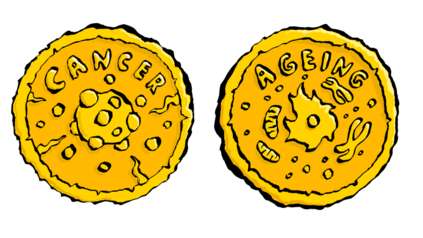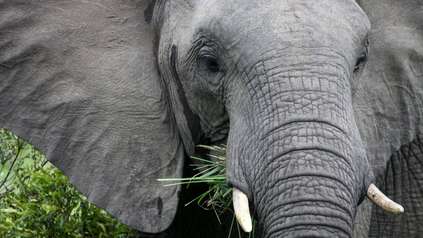Key human bladder cancer genes pinpointed in cats and dogs
Key bladder cancer genes have been uncovered through studying the cancers in cats and dogs, in a significant stride for finding which of many mutations are the most important in the cancer’s development.
Previous research has identified around 60 genes responsible for bladder cancer development in humans – too many to attempt to develop targeted drugs, and current treatment options for patients remain limited. By looking at bladder cancer in other species to see which genes are also commonly mutated, researchers can narrow down biologically important genes most relevant for study in humans too, helping prioritise the development of new cancer therapies.
Researchers from the Wellcome Sanger Institute, the University of Guelph in Canada and their collaborators sequenced cancer tumours in cats and dogs and compared the findings with that seen in human bladder cancers to understand the variation in mutations between species.
The study marks the most extensive sequencing of canine bladder cancer and the first-ever sequencing of feline bladder cancer.
The findings, published today (28 August) in Genome Biology, shed light on common bladder cancer-related mutations across species. The researchers hope this will inform more focused research investigating bladder cancer.
Over 100,000 individuals in the UK are living with bladder cancer*. Among them, around 25 per cent will go on to have muscle-invasive bladder cancer (MIBC)**, where the cancer has progressed beyond the bladder lining into the muscle layer and sometimes even further. MIBC is more aggressive and associated with much poorer outcomes due to its tendency to come back and spread to other parts of the body. Current understanding and treatment options for MIBC are very limited.
Understanding bladder cancer on a molecular level could help inform targets for drug interventions. Previous sequencing work in humans has implicated up to 60 genes driving the development of MIBC, making figuring out which are most important for the development and progression of the cancer difficult.
Cats and dogs also develop bladder cancer with similarities in both its appearance and behaviour to human MIBC. Studying these spontaneous*** cases in animals could provide valuable insights into the disease and pinpoint key genetic events driving the cancer among the mutational background noise in humans. The logic behind this is that if a gene mutation is conserved across multiple species, it is more likely to be biologically relevant for the cancer’s development, helping sift the many genes under investigation in previous work.
In this new study leveraging cross-species comparative analysis, researchers from the Wellcome Sanger Institute and their collaborators set out to find shared genes involved in bladder cancer to inform insights into human MIBC and help focus future research into treatment options.
The team collaborated with veterinary pathologists from 17 different countries to obtain bladder cancer tissue samples from human, feline and canine patients § that had been diagnosed with the disease, and matched this with ‘healthy tissue’ from the same animal to reveal genes mutated in different species.
From approximately 60 driver genes found mutated in human MIBC, three were also found in cats’ bladder cancer – TP53, FAT1, and NRAS – and two in dogs’ bladder cancer – ARID1A and KDM6A. The most frequently mutated gene in cats was TP53, which is also the most frequently mutated gene in human MIBC.
Similar genetic events, like ‘mismatch repair deficiency’ – which causes mutations in cancer-related genes, and ‘chromothripsis’ – which leads to major changes in DNA structure, were found in all three species, indicating a common genetic basis.
The team also identified important differences between species. For example, BRAF is the most frequently mutated gene in the dog bladder cancers, and the position of the mutation in the gene is exactly the same as found in human melanomas, however, BRAF mutations in human MIBC are only found in ~3 per cent of cases. Identifying this feature in dogs could allow their use as a relevant model for BRAF-mutated MIBC patients, whose numbers may be too small for clinical trials.
Overall, the cross-species comparison approach provides a basis for developing potential treatments, enabling researchers to prioritise the top candidate driver genes in future drug research. Furthermore, the approach aids understanding of bladder cancer biology across the species and the findings highlight the potential of these animal models. The identification of similarities between cancer in pets and humans might help us re-purpose some human cancer treatments for pets too. Demonstrating the power of the ‘One Medicine, One Health’ ɤ concept – what we learn about one species could and should benefit others – this study helps to bridge the gap between human and animal health research.
“Many people are surprised to hear their pet has developed bladder cancer. As this study shows, we share more in common with our beloved companions than one might expect. Here we show cats and dogs who naturally develop bladder cancer can generate insights for a particularly aggressive type of bladder cancer in humans. Genomics gives us a unique view into the hidden similarities and differences of cancer between species so that we can drill down the key genes driving cancer and drug targets can be prioritised.”
Dr Geoff Wood, senior author of the paper, professor at Ontario Veterinary College, University of Guelph, Canada and co-director of the Institute for Comparative Cancer Investigation
“Cross-species oncogenomics can help us uncover the tiny details of how bladder cancer disease forms and grows. The genetic changes, or mutations, we have identified across humans, cats and dogs suggest they are important enough to be conserved between species. Our research uncovering these shared molecular aspects opens up the possibility of developing new, targeted treatments. This could save the at times unnecessary human and animal testing that focuses on less important genes.”
Dr David Adams, senior author of the study and senior group leader at the Wellcome Sanger Institute
“This was a triumphant effort, pulling together veterinary pathologists from all over the world. It really is remarkable to have such diversity in tissue samples, thus we can be confident about the generalisability of our research. Our findings show it is good to have multiple animal models for bladder cancer biology representing different driver genes to capture distinct patient populations. We hope our findings will inform research in this area to help not only humans who get bladder cancer – but animals too, as therapies can benefit both species.”
Dr Louise van der Weyden, senior author of the study and senior staff scientist at the Wellcome Sanger Institute
More information
Notes to Editors:
*https://actionbladdercanceruk.org/the-facts-about-bladder-cancer/
**To find out more about muscle invasive bladder cancer: https://www.cancerresearchuk.org/about-cancer/bladder-cancer/types-stages-grades/muscle-invasive
***These were spontaneous – natural – cases of urothelial carcinoma, meaning no harm was caused to animals.
§ As part of this study, researchers also sequenced bovine bladder cancer cases, identifying a novel mutational ‘signature’ – a specific pattern of DNA mutations. While cattle do not commonly develop bladder cancer, ingestion of bracken fern can cause urinary bladder bleeding and the development of multiple bladder cancer tumours. The team showed the harmful effect of bracken fern and its purified toxin on human bladder cancer cells. This is particularly relevant for studies examining the health effects of bracken fern, as it has been linked to cancer of the oesophagus and stomach in humans previously. In many countries, it is considered a delicacy and used in herbal medicines. For more on the study’s findings in cattle, please refer to the publication.
ɤ The ‘One Medicine, One Health’ approach emphasises the interconnectedness of medical knowledge between humans and animals, where medical advancement in one can ultimately benefit health across species. Find out more about ‘One Medicine, One Health’: https://www.humanimaltrust.org.uk/one-medicine
Publication:
K. Wong, G. A. Wood, D. Adams, L. van der Weyden et al. (2023) ‘Cross-species oncogenomics offers insight into human muscle-invasive bladder cancer.’ Genome Biology. DOI: 10.1186/s13059-023-03026-4





